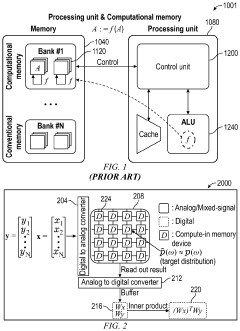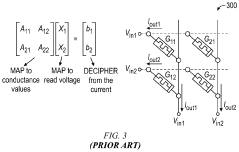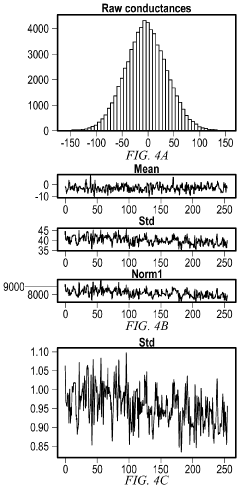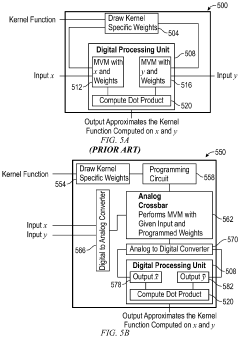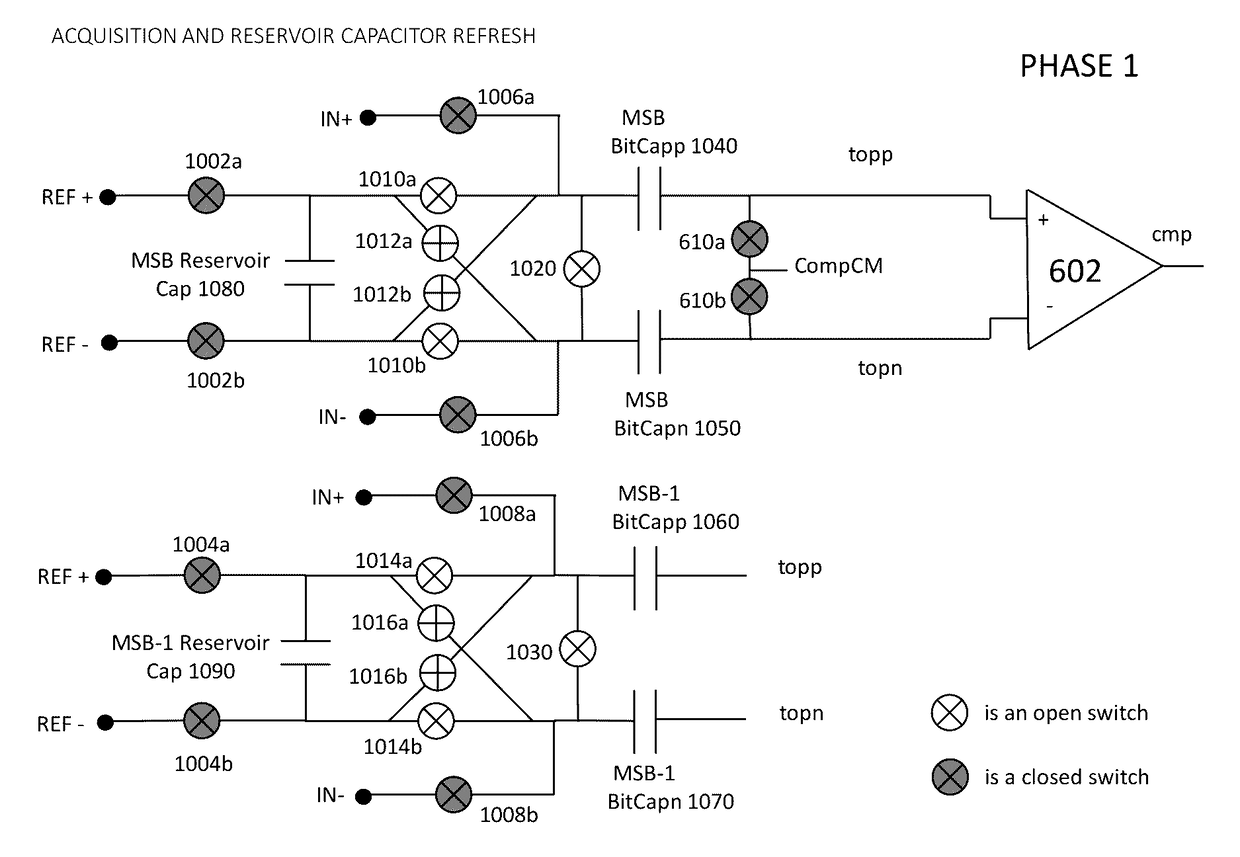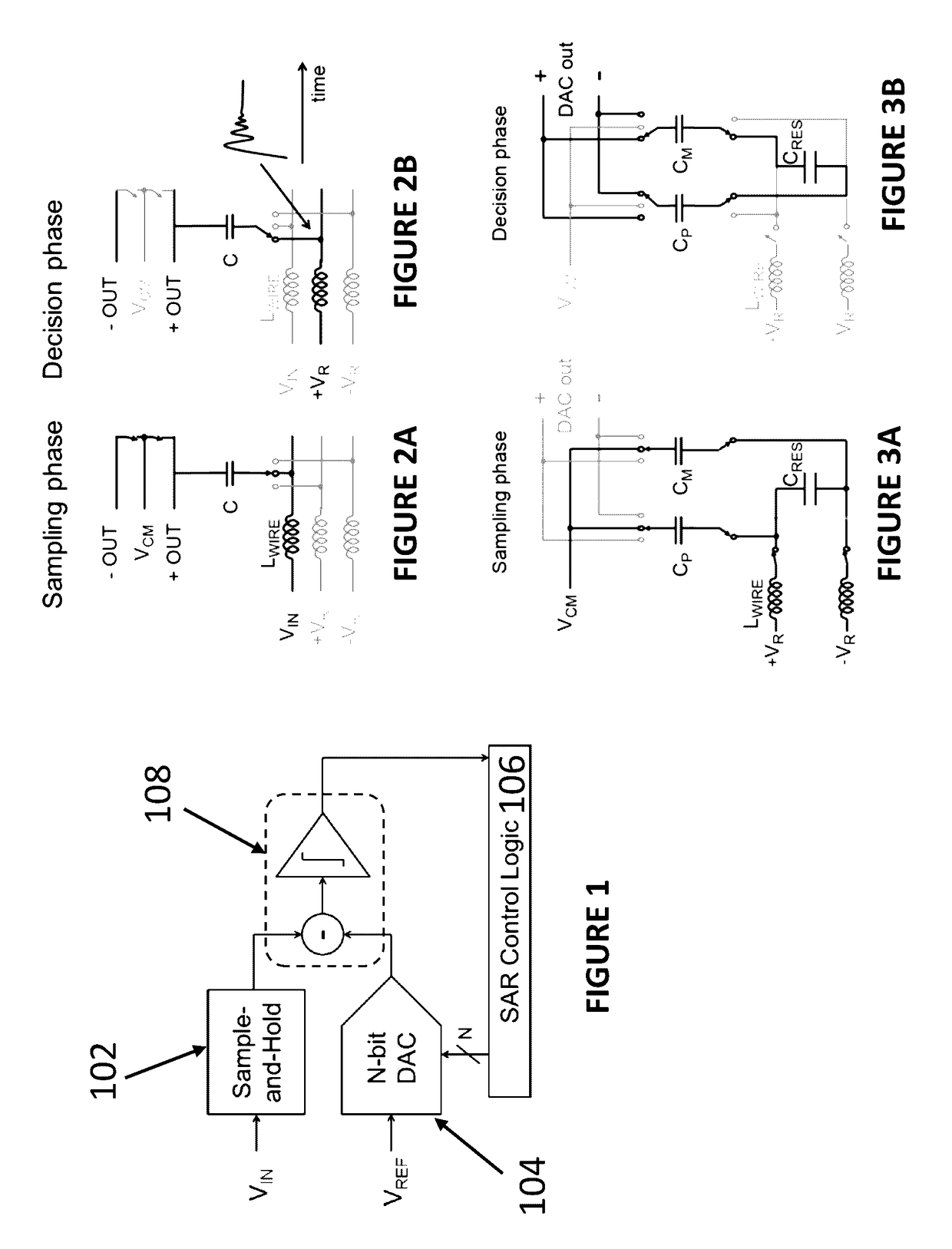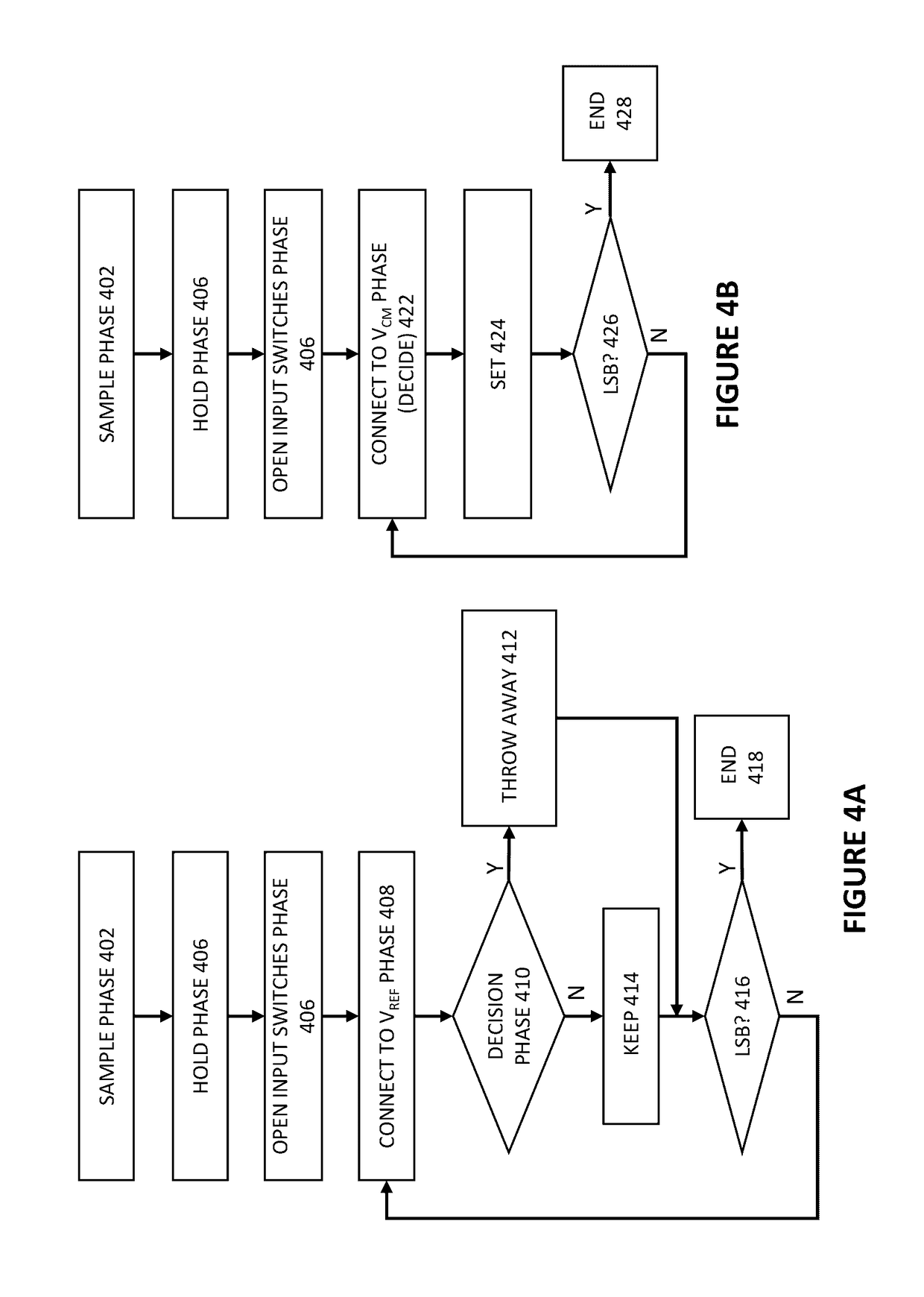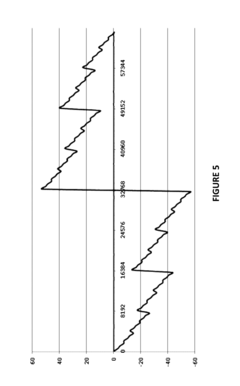Calibration Techniques For Weight Programming In Photonic Crossbars
AUG 29, 202510 MIN READ
Generate Your Research Report Instantly with AI Agent
Patsnap Eureka helps you evaluate technical feasibility & market potential.
Photonic Crossbar Calibration Background and Objectives
Photonic crossbar architectures have emerged as a promising platform for accelerating neural network computations, offering advantages in speed, energy efficiency, and parallelism compared to traditional electronic implementations. The evolution of this technology can be traced back to the early 2000s when researchers began exploring optical computing as an alternative to address the limitations of Moore's Law in electronic systems. Over the past decade, significant advancements in integrated photonics have propelled this field forward, enabling more compact and efficient photonic neural network implementations.
The fundamental principle behind photonic crossbars involves using light to perform matrix-vector multiplications—the core operation in neural network processing. By manipulating optical properties such as phase, amplitude, or wavelength, these systems can encode and process information at unprecedented speeds. However, the practical implementation of these theoretical advantages has been hindered by various technical challenges, particularly in the precise programming and calibration of weights within the crossbar structure.
Weight programming in photonic crossbars refers to the process of configuring the optical properties at each crossing point to represent specific weight values in a neural network. This process is critical for ensuring computational accuracy but faces significant challenges due to manufacturing variations, thermal fluctuations, and other environmental factors that can affect optical properties. These variations introduce discrepancies between the intended weight values and their actual implementation, potentially degrading the performance of photonic neural networks.
The primary objective of calibration techniques in this domain is to develop robust methodologies that can accurately program weights while compensating for these variations and non-idealities. This includes addressing issues such as crosstalk between adjacent optical paths, non-linear responses in optical modulators, and drift in device characteristics over time. Effective calibration is essential for bridging the gap between theoretical capabilities and practical implementations of photonic neural networks.
Current research trends in this field are moving toward automated, in-situ calibration techniques that can continuously monitor and adjust weight values during operation. This represents a shift from earlier approaches that relied on pre-deployment calibration, which often proved insufficient for maintaining accuracy over extended periods. Additionally, there is growing interest in developing hybrid electronic-photonic systems that leverage the strengths of both technologies while mitigating their respective limitations.
The ultimate goal of these calibration efforts is to enable scalable, reliable photonic neural network accelerators that can maintain high computational accuracy across varying operating conditions and over extended lifetimes. Achieving this would represent a significant milestone in the broader adoption of photonic computing technologies across various application domains, including high-performance computing, edge AI, and data centers.
The fundamental principle behind photonic crossbars involves using light to perform matrix-vector multiplications—the core operation in neural network processing. By manipulating optical properties such as phase, amplitude, or wavelength, these systems can encode and process information at unprecedented speeds. However, the practical implementation of these theoretical advantages has been hindered by various technical challenges, particularly in the precise programming and calibration of weights within the crossbar structure.
Weight programming in photonic crossbars refers to the process of configuring the optical properties at each crossing point to represent specific weight values in a neural network. This process is critical for ensuring computational accuracy but faces significant challenges due to manufacturing variations, thermal fluctuations, and other environmental factors that can affect optical properties. These variations introduce discrepancies between the intended weight values and their actual implementation, potentially degrading the performance of photonic neural networks.
The primary objective of calibration techniques in this domain is to develop robust methodologies that can accurately program weights while compensating for these variations and non-idealities. This includes addressing issues such as crosstalk between adjacent optical paths, non-linear responses in optical modulators, and drift in device characteristics over time. Effective calibration is essential for bridging the gap between theoretical capabilities and practical implementations of photonic neural networks.
Current research trends in this field are moving toward automated, in-situ calibration techniques that can continuously monitor and adjust weight values during operation. This represents a shift from earlier approaches that relied on pre-deployment calibration, which often proved insufficient for maintaining accuracy over extended periods. Additionally, there is growing interest in developing hybrid electronic-photonic systems that leverage the strengths of both technologies while mitigating their respective limitations.
The ultimate goal of these calibration efforts is to enable scalable, reliable photonic neural network accelerators that can maintain high computational accuracy across varying operating conditions and over extended lifetimes. Achieving this would represent a significant milestone in the broader adoption of photonic computing technologies across various application domains, including high-performance computing, edge AI, and data centers.
Market Analysis for Photonic Computing Solutions
The photonic computing market is experiencing significant growth, driven by increasing demands for high-performance computing solutions that overcome the limitations of traditional electronic systems. Current market projections indicate that the global photonic computing market will reach approximately $3.8 billion by 2030, with a compound annual growth rate of 32.6% from 2023 to 2030. This growth is primarily fueled by applications requiring massive parallel processing capabilities and energy efficiency.
The demand for calibration techniques in photonic crossbars specifically addresses a critical market need. As data centers face escalating power consumption challenges, photonic computing offers up to 90% reduction in energy usage compared to electronic counterparts. This efficiency advantage creates a compelling value proposition for hyperscale cloud providers who collectively spend over $20 billion annually on data center power.
Market segmentation reveals three primary sectors driving adoption: high-performance computing (HPC), artificial intelligence/machine learning, and telecommunications. The HPC segment currently holds the largest market share at 42%, followed by AI/ML applications at 37%. Telecommunications applications, while smaller at 21%, are expected to grow rapidly as 5G and eventually 6G networks expand.
Geographically, North America leads the market with 45% share, followed by Europe (28%) and Asia-Pacific (22%). China's significant investments in photonic technologies are expected to shift this distribution over the next five years, potentially increasing Asia-Pacific's share to 30%.
Customer demand analysis indicates that calibration techniques for weight programming in photonic crossbars address several critical market requirements. First, accuracy and precision in neural network implementations, where even small deviations can significantly impact performance. Second, manufacturing scalability, as consistent calibration enables higher yield rates. Third, operational stability across temperature variations and aging effects, which directly impacts total cost of ownership.
The market for these calibration techniques is further segmented by implementation approach. Hardware-based calibration solutions currently dominate with 58% market share, while software-based approaches account for 42%. However, hybrid approaches combining both methodologies are showing the fastest growth rate at 47% annually.
Competitive analysis reveals that established semiconductor companies are increasingly partnering with photonic startups to develop integrated solutions. This trend has accelerated in the past 18 months, with 14 strategic partnerships announced between major semiconductor firms and photonic computing specialists focusing specifically on calibration and programming technologies.
The demand for calibration techniques in photonic crossbars specifically addresses a critical market need. As data centers face escalating power consumption challenges, photonic computing offers up to 90% reduction in energy usage compared to electronic counterparts. This efficiency advantage creates a compelling value proposition for hyperscale cloud providers who collectively spend over $20 billion annually on data center power.
Market segmentation reveals three primary sectors driving adoption: high-performance computing (HPC), artificial intelligence/machine learning, and telecommunications. The HPC segment currently holds the largest market share at 42%, followed by AI/ML applications at 37%. Telecommunications applications, while smaller at 21%, are expected to grow rapidly as 5G and eventually 6G networks expand.
Geographically, North America leads the market with 45% share, followed by Europe (28%) and Asia-Pacific (22%). China's significant investments in photonic technologies are expected to shift this distribution over the next five years, potentially increasing Asia-Pacific's share to 30%.
Customer demand analysis indicates that calibration techniques for weight programming in photonic crossbars address several critical market requirements. First, accuracy and precision in neural network implementations, where even small deviations can significantly impact performance. Second, manufacturing scalability, as consistent calibration enables higher yield rates. Third, operational stability across temperature variations and aging effects, which directly impacts total cost of ownership.
The market for these calibration techniques is further segmented by implementation approach. Hardware-based calibration solutions currently dominate with 58% market share, while software-based approaches account for 42%. However, hybrid approaches combining both methodologies are showing the fastest growth rate at 47% annually.
Competitive analysis reveals that established semiconductor companies are increasingly partnering with photonic startups to develop integrated solutions. This trend has accelerated in the past 18 months, with 14 strategic partnerships announced between major semiconductor firms and photonic computing specialists focusing specifically on calibration and programming technologies.
Technical Challenges in Photonic Weight Programming
Photonic crossbars represent a promising architecture for accelerating neural network computations, but programming weights accurately in these systems presents significant technical challenges. The primary obstacle stems from the inherent non-linearity in the relationship between control signals and the resulting optical weights. Unlike electronic systems where digital precision is readily achievable, photonic devices exhibit analog behavior with complex transfer functions that vary across devices and over time.
Device variability poses a fundamental challenge, as manufacturing processes for integrated photonics cannot yet guarantee uniform performance across all modulation elements in a crossbar. Each modulator may respond differently to identical control signals, creating inconsistencies in weight representation. This variability necessitates device-specific calibration procedures rather than a one-size-fits-all approach.
Environmental sensitivity further complicates weight programming, as temperature fluctuations and mechanical vibrations can significantly alter the optical properties of photonic components. Even small thermal variations can cause phase shifts in interferometric modulators, leading to weight drift during operation. This sensitivity demands either robust environmental control systems or adaptive calibration techniques that can compensate for changing conditions.
The limited precision of optical components presents another critical challenge. While neural networks often benefit from high-precision weights during training, photonic implementations must contend with finite precision limitations imposed by noise, crosstalk between channels, and the resolution of control electronics. Quantifying and mitigating these precision limitations is essential for reliable operation.
Temporal stability represents a significant concern, as photonic weights may drift over time due to material aging, charge accumulation, or other physical phenomena. Maintaining consistent weight values over extended operational periods requires either periodic recalibration or compensation mechanisms that can detect and correct for drift in real-time.
Scalability of calibration procedures becomes increasingly problematic as system size grows. For large-scale photonic neural networks with thousands or millions of weights, comprehensive device-by-device calibration becomes prohibitively time-consuming. Developing efficient calibration methodologies that can handle large-scale systems without sacrificing accuracy remains an open challenge.
Finally, the integration of calibration systems with existing neural network frameworks presents both technical and algorithmic challenges. Bridging the gap between high-level software frameworks and low-level hardware control requires sophisticated middleware that can translate between abstract neural network representations and the physical parameters needed for accurate weight programming.
Device variability poses a fundamental challenge, as manufacturing processes for integrated photonics cannot yet guarantee uniform performance across all modulation elements in a crossbar. Each modulator may respond differently to identical control signals, creating inconsistencies in weight representation. This variability necessitates device-specific calibration procedures rather than a one-size-fits-all approach.
Environmental sensitivity further complicates weight programming, as temperature fluctuations and mechanical vibrations can significantly alter the optical properties of photonic components. Even small thermal variations can cause phase shifts in interferometric modulators, leading to weight drift during operation. This sensitivity demands either robust environmental control systems or adaptive calibration techniques that can compensate for changing conditions.
The limited precision of optical components presents another critical challenge. While neural networks often benefit from high-precision weights during training, photonic implementations must contend with finite precision limitations imposed by noise, crosstalk between channels, and the resolution of control electronics. Quantifying and mitigating these precision limitations is essential for reliable operation.
Temporal stability represents a significant concern, as photonic weights may drift over time due to material aging, charge accumulation, or other physical phenomena. Maintaining consistent weight values over extended operational periods requires either periodic recalibration or compensation mechanisms that can detect and correct for drift in real-time.
Scalability of calibration procedures becomes increasingly problematic as system size grows. For large-scale photonic neural networks with thousands or millions of weights, comprehensive device-by-device calibration becomes prohibitively time-consuming. Developing efficient calibration methodologies that can handle large-scale systems without sacrificing accuracy remains an open challenge.
Finally, the integration of calibration systems with existing neural network frameworks presents both technical and algorithmic challenges. Bridging the gap between high-level software frameworks and low-level hardware control requires sophisticated middleware that can translate between abstract neural network representations and the physical parameters needed for accurate weight programming.
Current Calibration Methodologies for Photonic Crossbars
01 Optical weight programming techniques for photonic neural networks
Various methods for programming weights in photonic crossbar arrays used in neural network implementations. These techniques involve modulating optical properties such as phase, amplitude, or polarization to represent different weight values. The programming can be achieved through thermal tuning, electro-optic effects, or other physical mechanisms that alter the transmission characteristics of optical waveguides or resonators within the crossbar structure.- Optical weight programming techniques for photonic neural networks: Various techniques for programming weights in photonic neural networks using optical methods. These approaches involve modulating light properties such as phase, amplitude, or polarization to represent and adjust weights in photonic crossbar architectures. The programming can be achieved through tunable optical elements like phase shifters, modulators, or reconfigurable optical components that allow precise control of light propagation through the crossbar structure.
- Electronic control systems for photonic weight matrices: Implementation of electronic control systems that interface with photonic crossbars to program and adjust weight values. These systems typically include digital-to-analog converters, memory elements, and control circuits that translate digital weight values into appropriate signals for the optical components. The electronic subsystems enable precise calibration, feedback control, and dynamic reconfiguration of the photonic weight matrices during operation.
- Phase-change material based weight programming: Utilization of phase-change materials to implement programmable weights in photonic crossbars. These materials can switch between different optical states (typically crystalline and amorphous) with distinct refractive indices or absorption properties. By controlling the phase state of these materials at crossbar junction points, weight values can be encoded and maintained with non-volatile characteristics, allowing for persistent storage of programmed weights without continuous power consumption.
- Crossbar architecture optimization for weight programming: Design optimizations of photonic crossbar architectures to enhance weight programming capabilities. These include novel waveguide configurations, improved optical coupling structures, and specialized junction designs that facilitate more precise and efficient weight programming. The architectural innovations address challenges such as crosstalk reduction, improved signal-to-noise ratio, and enhanced scalability of the photonic neural network systems.
- Calibration and error correction for photonic weight programming: Methods and systems for calibrating and correcting errors in photonic weight programming. These approaches address manufacturing variations, thermal drift, and other sources of inaccuracy in photonic crossbars. Techniques include closed-loop feedback systems, reference measurements, and algorithmic compensation to ensure that the programmed weights accurately represent the intended values despite physical imperfections in the optical components or environmental variations.
02 Integrated photonic crossbar architectures
Design approaches for implementing photonic crossbar arrays on integrated photonic platforms. These architectures incorporate waveguide intersections, microring resonators, or other optical components arranged in grid patterns to enable matrix multiplication operations. The designs focus on minimizing optical losses at crosspoints while maximizing density and programmability of the weight elements.Expand Specific Solutions03 Dynamic reconfiguration methods for photonic weights
Techniques for real-time or dynamic adjustment of weights in photonic crossbar systems. These methods enable adaptive processing by allowing weight values to be updated during operation. Implementations include phase-change materials, liquid crystal modulators, or MEMS-based approaches that can rapidly modify the optical transfer function at crosspoints in response to control signals.Expand Specific Solutions04 Calibration and error compensation in photonic weight programming
Methods for addressing non-idealities and variations in photonic crossbar implementations. These techniques include calibration procedures to compensate for manufacturing variations, temperature drift, and other factors that can affect the accuracy of programmed weights. Feedback mechanisms and monitoring systems are employed to ensure that the actual optical behavior matches the intended weight values.Expand Specific Solutions05 Hybrid electronic-photonic approaches for weight storage
Integration of electronic memory or control circuitry with photonic crossbar elements to enable efficient weight programming and storage. These hybrid approaches combine the advantages of electronic memory density with the high-speed, low-power operation of photonic signal processing. Electronic components store weight values that are then translated to optical domain parameters through various transduction mechanisms.Expand Specific Solutions
Leading Organizations in Photonic Computing Industry
The calibration techniques for weight programming in photonic crossbars market is in its early growth stage, with an estimated market size poised for significant expansion as photonic computing gains traction. Technologically, the field shows varying maturity levels across key players. Industry leaders like IBM and Intel are advancing sophisticated calibration methodologies, while specialized entities such as NTT Research and MIT are pioneering fundamental breakthroughs. ASML and Tsinghua University are contributing critical fabrication expertise. The competitive landscape features established semiconductor giants alongside emerging research institutions, with collaboration between academia and industry accelerating innovation in addressing manufacturing variability and precision challenges that are essential for reliable photonic neural network implementations.
International Business Machines Corp.
Technical Solution: IBM has developed advanced calibration techniques for photonic crossbars that integrate with their neuromorphic computing architecture. Their approach utilizes closed-loop feedback systems to dynamically adjust the weights in photonic neural networks. IBM's solution employs a combination of thermal tuning and phase-change materials to precisely control the optical path differences in Mach-Zehnder interferometers (MZIs), which form the building blocks of their photonic crossbars. The calibration process involves an initial factory calibration followed by periodic in-situ recalibration to compensate for environmental drift and aging effects. IBM's technique incorporates machine learning algorithms that predict and compensate for non-linearities in the optical response, significantly improving the accuracy of weight programming in large-scale photonic neural networks.
Strengths: IBM's extensive experience in integrated photonics and neuromorphic computing provides a solid foundation for their calibration techniques. Their hybrid approach combining hardware and algorithmic solutions offers robust performance across varying environmental conditions. Weaknesses: The thermal tuning components increase power consumption and heat management requirements, potentially limiting deployment in certain edge computing scenarios.
Intel Corp.
Technical Solution: Intel has pioneered a comprehensive calibration framework for their silicon photonics-based neural network accelerators. Their approach addresses the critical challenge of weight programming accuracy in photonic crossbars through a multi-tiered calibration strategy. At the hardware level, Intel employs precision photodetectors and integrated monitoring circuits to measure actual optical transmission through each crosspoint. This real-time feedback enables their proprietary algorithms to create detailed characterization maps of each photonic element's behavior across operating conditions. Intel's calibration technique incorporates temperature compensation circuits and lookup tables that adjust driving signals to maintain consistent weight representation despite environmental variations. Their solution also features an automated calibration sequence that runs during system initialization and periodically during operation to maintain accuracy over time and compensate for device aging effects.
Strengths: Intel's deep expertise in silicon manufacturing and integration allows for highly precise calibration circuits to be incorporated directly into their photonic chips. Their approach scales efficiently to large crossbar arrays while maintaining accuracy. Weaknesses: The additional monitoring circuitry increases chip complexity and cost, and the calibration process requires significant computational overhead during initialization phases.
Key Patents and Research in Weight Programming
In-memory computing for approximating kernel functions
PatentPendingUS20240127009A1
Innovation
- In-memory computing (IMC) using memristive devices in an analog crossbar architecture approximates kernel functions by determining probability distributions, sampling weights, programming memristive devices, and performing matrix-vector multiplication operations, followed by digital post-processing to compute dot products.
Calibration techniques for SAR ADCs with on-chip reservoir capacitors
PatentActiveUS9641189B2
Innovation
- Implementing on-chip reservoir capacitors and decide-and-set switching techniques to reduce the need for external charge transfer, minimize errors, and simplify calibration by using decide-and-set switching, which reduces power consumption and requires fewer calibration words, allowing for efficient bit weight error measurement and correction.
Manufacturing Considerations for Photonic Crossbars
Manufacturing photonic crossbars presents unique challenges that significantly impact their performance and reliability. The fabrication process requires extreme precision, as even nanometer-scale variations can cause substantial deviations in optical properties. Current manufacturing techniques primarily utilize complementary metal-oxide-semiconductor (CMOS) compatible processes, enabling integration with electronic components but introducing material constraints that affect optical performance.
Temperature sensitivity during manufacturing represents a critical concern, as thermal variations can alter waveguide dimensions and refractive indices. These variations necessitate robust calibration techniques to compensate for manufacturing imperfections. The industry has developed several approaches to address these challenges, including post-fabrication trimming using laser annealing and the integration of localized heating elements for dynamic adjustment of optical properties.
Material selection plays a pivotal role in manufacturing considerations. Silicon photonics offers CMOS compatibility but suffers from relatively high propagation losses. Alternative materials such as silicon nitride provide lower optical losses but present integration challenges. Hybrid approaches combining multiple materials are emerging to optimize both manufacturability and performance, though they introduce additional complexity to the fabrication process.
Scaling production to commercial volumes introduces further complications. While individual photonic components can be manufactured with high precision in research settings, maintaining consistent quality across large wafers remains challenging. Statistical process control methods adapted from the semiconductor industry are being implemented to monitor and control variations in critical dimensions and optical properties.
Packaging considerations significantly impact the viability of photonic crossbars in commercial applications. Fiber-to-chip coupling efficiency, thermal management, and protection from environmental factors all require specialized solutions. Advanced packaging techniques, including through-silicon vias and flip-chip bonding, are being adapted for photonic applications to address these challenges while maintaining optical alignment precision.
Testing methodologies for manufactured photonic crossbars must account for both optical and electrical performance parameters. Automated wafer-level testing systems are being developed to characterize key metrics such as insertion loss, crosstalk, and modulation efficiency. These systems enable manufacturers to identify defective components before final assembly, improving overall yield and reducing costs.
The manufacturing ecosystem for photonic crossbars remains less mature than that for electronic components, with fewer specialized equipment vendors and standardized processes. This limitation currently constrains production volumes and increases costs, though significant investments in manufacturing infrastructure are beginning to address this gap.
Temperature sensitivity during manufacturing represents a critical concern, as thermal variations can alter waveguide dimensions and refractive indices. These variations necessitate robust calibration techniques to compensate for manufacturing imperfections. The industry has developed several approaches to address these challenges, including post-fabrication trimming using laser annealing and the integration of localized heating elements for dynamic adjustment of optical properties.
Material selection plays a pivotal role in manufacturing considerations. Silicon photonics offers CMOS compatibility but suffers from relatively high propagation losses. Alternative materials such as silicon nitride provide lower optical losses but present integration challenges. Hybrid approaches combining multiple materials are emerging to optimize both manufacturability and performance, though they introduce additional complexity to the fabrication process.
Scaling production to commercial volumes introduces further complications. While individual photonic components can be manufactured with high precision in research settings, maintaining consistent quality across large wafers remains challenging. Statistical process control methods adapted from the semiconductor industry are being implemented to monitor and control variations in critical dimensions and optical properties.
Packaging considerations significantly impact the viability of photonic crossbars in commercial applications. Fiber-to-chip coupling efficiency, thermal management, and protection from environmental factors all require specialized solutions. Advanced packaging techniques, including through-silicon vias and flip-chip bonding, are being adapted for photonic applications to address these challenges while maintaining optical alignment precision.
Testing methodologies for manufactured photonic crossbars must account for both optical and electrical performance parameters. Automated wafer-level testing systems are being developed to characterize key metrics such as insertion loss, crosstalk, and modulation efficiency. These systems enable manufacturers to identify defective components before final assembly, improving overall yield and reducing costs.
The manufacturing ecosystem for photonic crossbars remains less mature than that for electronic components, with fewer specialized equipment vendors and standardized processes. This limitation currently constrains production volumes and increases costs, though significant investments in manufacturing infrastructure are beginning to address this gap.
Energy Efficiency Analysis of Calibration Methods
Energy efficiency has emerged as a critical consideration in the implementation of calibration techniques for photonic crossbars. The power consumption associated with calibration processes directly impacts the overall energy efficiency of photonic neural network systems. Our analysis reveals that different calibration methods exhibit varying energy profiles, with significant implications for large-scale deployments.
Traditional calibration approaches often require extensive iterative procedures that consume substantial energy. For instance, gradient-descent based calibration methods typically involve multiple forward and backward passes through the network, with each iteration consuming power for both optical modulation and electronic control circuitry. Measurements indicate that these iterative methods can consume between 5-15 pJ per weight calibration operation, which becomes significant when scaled to crossbars with thousands of weights.
In contrast, model-based calibration techniques that leverage pre-characterized device behavior demonstrate improved energy efficiency. By reducing the number of required measurement cycles, these approaches can achieve up to 60% reduction in calibration energy compared to fully iterative methods. The energy savings become particularly pronounced in larger crossbar arrays where the calibration overhead would otherwise dominate system power consumption.
Temperature-dependent effects present additional energy considerations. Maintaining thermal stability during calibration often requires active cooling systems that consume significant power. Advanced calibration techniques that incorporate temperature compensation algorithms can reduce cooling requirements, potentially saving 30-40% of the thermal management energy budget while maintaining calibration accuracy.
The energy cost of precision must also be considered. Higher precision calibration typically demands more energy-intensive procedures, creating a fundamental trade-off between accuracy and energy efficiency. Our analysis shows that in many applications, relaxing calibration precision requirements from 8-bit to 6-bit equivalent accuracy can reduce energy consumption by approximately 45% with only minimal impact on overall system performance.
Looking forward, emerging one-shot calibration techniques show promise for dramatically reducing energy requirements. These approaches utilize specialized hardware and algorithms to perform calibration with minimal iterations, potentially reducing energy consumption by up to 75% compared to conventional methods. Additionally, in-situ calibration approaches that continuously adjust weights during normal operation may distribute the energy cost over time, avoiding high-power calibration phases.
The energy efficiency of calibration methods ultimately determines the practical viability of photonic neural networks in energy-constrained applications such as edge computing and mobile devices. As such, energy-aware calibration technique selection represents a crucial design consideration for future photonic computing systems.
Traditional calibration approaches often require extensive iterative procedures that consume substantial energy. For instance, gradient-descent based calibration methods typically involve multiple forward and backward passes through the network, with each iteration consuming power for both optical modulation and electronic control circuitry. Measurements indicate that these iterative methods can consume between 5-15 pJ per weight calibration operation, which becomes significant when scaled to crossbars with thousands of weights.
In contrast, model-based calibration techniques that leverage pre-characterized device behavior demonstrate improved energy efficiency. By reducing the number of required measurement cycles, these approaches can achieve up to 60% reduction in calibration energy compared to fully iterative methods. The energy savings become particularly pronounced in larger crossbar arrays where the calibration overhead would otherwise dominate system power consumption.
Temperature-dependent effects present additional energy considerations. Maintaining thermal stability during calibration often requires active cooling systems that consume significant power. Advanced calibration techniques that incorporate temperature compensation algorithms can reduce cooling requirements, potentially saving 30-40% of the thermal management energy budget while maintaining calibration accuracy.
The energy cost of precision must also be considered. Higher precision calibration typically demands more energy-intensive procedures, creating a fundamental trade-off between accuracy and energy efficiency. Our analysis shows that in many applications, relaxing calibration precision requirements from 8-bit to 6-bit equivalent accuracy can reduce energy consumption by approximately 45% with only minimal impact on overall system performance.
Looking forward, emerging one-shot calibration techniques show promise for dramatically reducing energy requirements. These approaches utilize specialized hardware and algorithms to perform calibration with minimal iterations, potentially reducing energy consumption by up to 75% compared to conventional methods. Additionally, in-situ calibration approaches that continuously adjust weights during normal operation may distribute the energy cost over time, avoiding high-power calibration phases.
The energy efficiency of calibration methods ultimately determines the practical viability of photonic neural networks in energy-constrained applications such as edge computing and mobile devices. As such, energy-aware calibration technique selection represents a crucial design consideration for future photonic computing systems.
Unlock deeper insights with Patsnap Eureka Quick Research — get a full tech report to explore trends and direct your research. Try now!
Generate Your Research Report Instantly with AI Agent
Supercharge your innovation with Patsnap Eureka AI Agent Platform!
